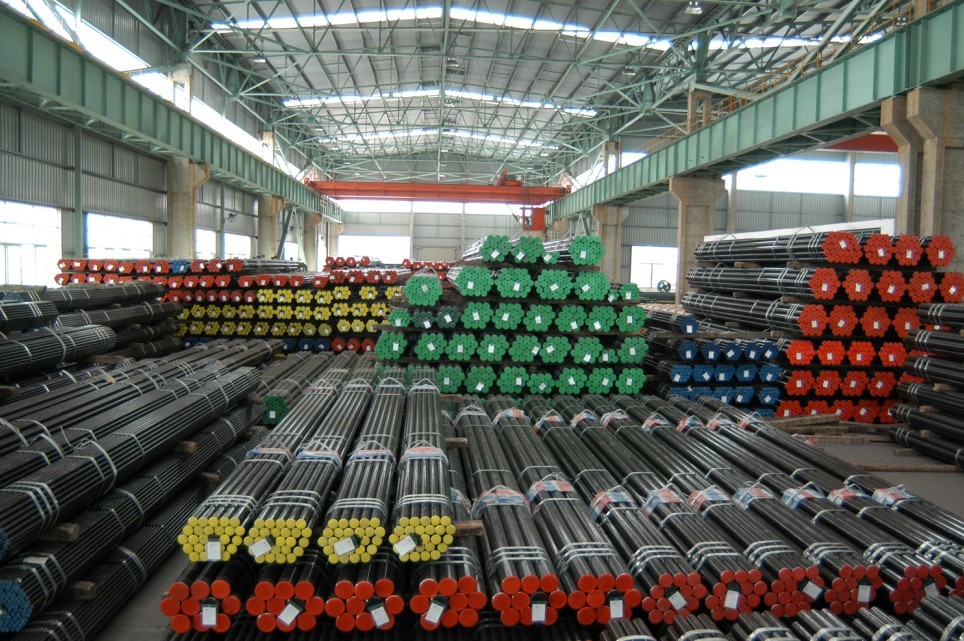The corrosion of seamless casing pipe is related to the partial pressure of corrosive gas, ambient temperature, water content, salinity, flow rate, pH value and other factors. The corrosion characteristics of oil and gas fields in different sea areas are not the same.
Common anti-corrosion methods for offshore seamless casing pipe

Cement sealing anticorrosion technology
In the earliest stage, the main reason for the casing damage is that the cement is not high enough to return to the outer water layer, which causes the corrosive gas in the water layer to erode the surface of the casing and cause corrosion. Therefore, in the 1980s, a strategy of increasing the cement back height was proposed to increase the corrosion resistance of the casing. Through this technology, the degree of casing corrosion has been reduced, but the casing corrosion has not been completely prevented, so the corrosion resistance of the casing has not been improved from the root cause.
Use corrosion-resistant alloy pipe
Since 2000, the anti-corrosion program of offshore seamless casing pipe began to seek solutions from the material to improve the anti-corrosion performance of the seamless casing pipe, so as to completely solve the problem of seamless casing pipe corrosion. In recent years, through indoor experiments, under certain temperature and pressure conditions and corrosive gas conditions, 1Cr, 3Cr, 9Cr, 13Cr and other Cr-containing pipes have been evaluated, and a set of anti-corrosion patterns suitable for offshore oil and gas field seamless casing pipe has been developed.
Inject corrosion inhibitor
From the beginning of the completion process, if the formation contains oil and corrosive gas, chemical anticorrosive agents will be added to the well fluid to prevent scale, wax and corrosion. Therefore, the use of chemical methods for anti-corrosion of seamless casing pipe is also a conventional method at home and abroad. Depending on the oil and gas field itself, intermittent or continuous injection of corrosion inhibitors can be used for anti-corrosion, and the injection volume also varies according to the corrosive environment of the oil and gas field. Since the addition of corrosion inhibitors needs to be continuous, on the one hand, the cost is high, and at the same time, it will also have a certain impact on on-site production.
Use anti-corrosion coating tube
For seamless casing pipe pipes, anti-corrosion coatings are often used at home and abroad to prevent them from being infiltrated in corrosive gases, which is also an effective anti-corrosion method. Some oil fields use the nitriding process for the internal and external anti-corrosion of the tubing, and its wear resistance is good. However, this method of anti-corrosion on the inner and outer walls will accelerate the corrosion of the inner wall of the casing to a certain extent. Yuzaka is more serious than other types of tubes. In addition, some oil and gas fields use epoxy powder coating, titanium nano coating, epoxy ester phenolic coating and other methods to prevent corrosion.
Strengthen corrosion monitoring
With the advancement of science and technology, more and more methods of monitoring corrosion have been applied: such as anode excitation technology, radiation activation technology, thin layer activation technology (TLA), optical fiber sensing technology, resonance frequency measurement method, and laser method to determine oxide film Thickness method, penetrant flaw detection method, electric potential gradient method, holographic interferometry, Raman spectroscopy, etc. Through these different monitoring methods, it is possible to monitor the corrosion of the seamless casing pipe in all directions, and provide better means and methods for the control of the corrosion of the seamless casing pipe.













 Eastern Steel Manufacturing Co.,Ltd not only improve product production and sales services, but also provide additional value-added services. As long as you need, we can complete your specific needs together.
Eastern Steel Manufacturing Co.,Ltd not only improve product production and sales services, but also provide additional value-added services. As long as you need, we can complete your specific needs together.










